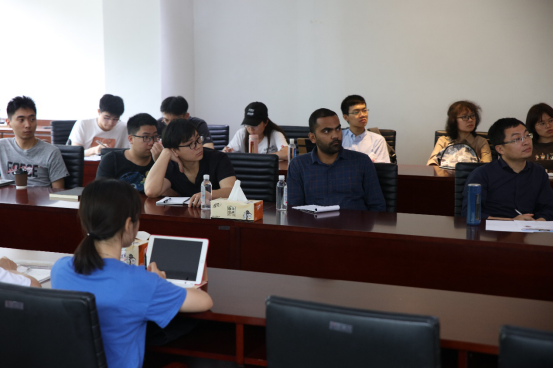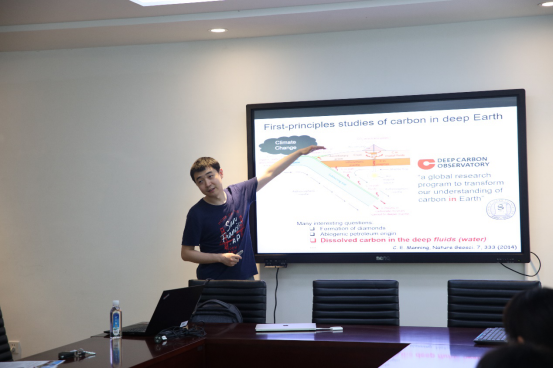Prof. Ding Pan obtained BS in physics from University of Science and Technology of China in 2005, and ScD from Institute of Physics, Chinese Academy of Sciences in 2011. After he worked as a postdoctoral researcher in the University of California at Davis (2011-2014) and the University of Chicago (2014-2016), he joined Hong Kong University of Science and Technology as an assistant professor in 2016. Prof. Pan has been developing and applying computational and numerical methods to understand and predict the properties and behavior of liquids, solids, and nanostructures from first principles. With the help of high-performance supercomputers, his group are seeking answers to the urgent and fundamental scientific questions relevant to sustainable development, e.g., water science, deep carbon cycle, and clean energy.

On April 18th, Prof. PAN Ding from Hong Kong University of Science and Technology gave a report entitled " Raman spectroscopy and multipole interactions determining molecular polarizability at finite temperature from first principles" for IAS teachers and students.
Knowledge of molecular polarizabilities in condensed phases provides important information about molecular crystals, and in general about materials composed of molecular or nano-building blocks. It is of great importance for the Raman spectroscopy. Prof. PAN Ding and his group proposed a first-principles method based on electronic densities to compute molecular polarizabilities in condensed phases. The method includes all multipole interactions in addition to the dipole-dipole one, and it is applicable to any semiconductor or insulator. They presented results for molecular polarizabilities of liquid water in a wide pressure-temperature range and found that at ambient conditions, the dipole-induced-dipole approximation is sufficiently accurate and the Clausius-Mossotti relation may be used, e.g. to obtain molecular polarizabilities from experimental refractive indexes. However, with increasing pressure this approximation becomes unreliable and in the case of ice X, where covalent bonds are present, the dipole-induced-dipole approximation breaks down. Further, they calculated the Raman spectra of (bi)carbonate aqueous solutions at supercritical conditions, and obtained the Raman scattering cross sections of carbon species at high pressures and high temperatures from first principles. They would discuss how to use our results to interpret and guide spectroscopic measurements.

With new perspectives, rich contents and strong sense of the times, this lecture would expand the academic horizons of IAS teachers and students.


